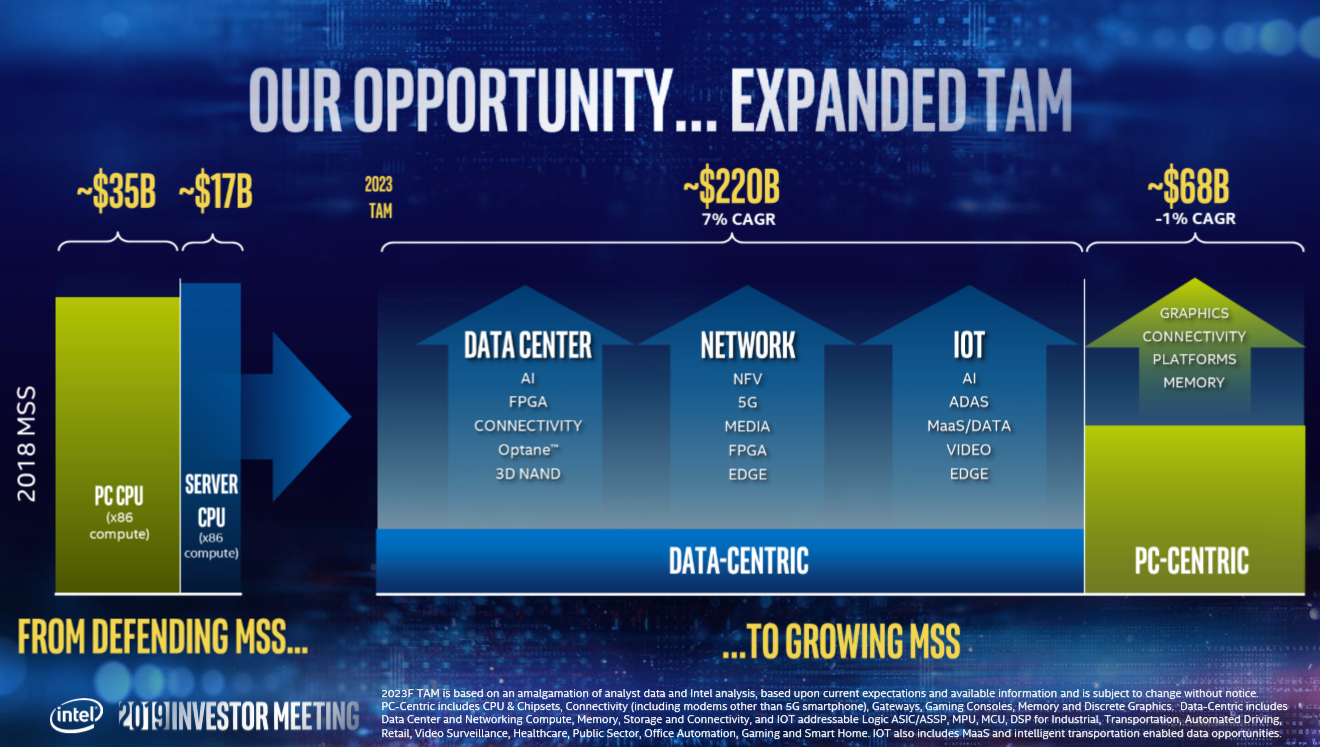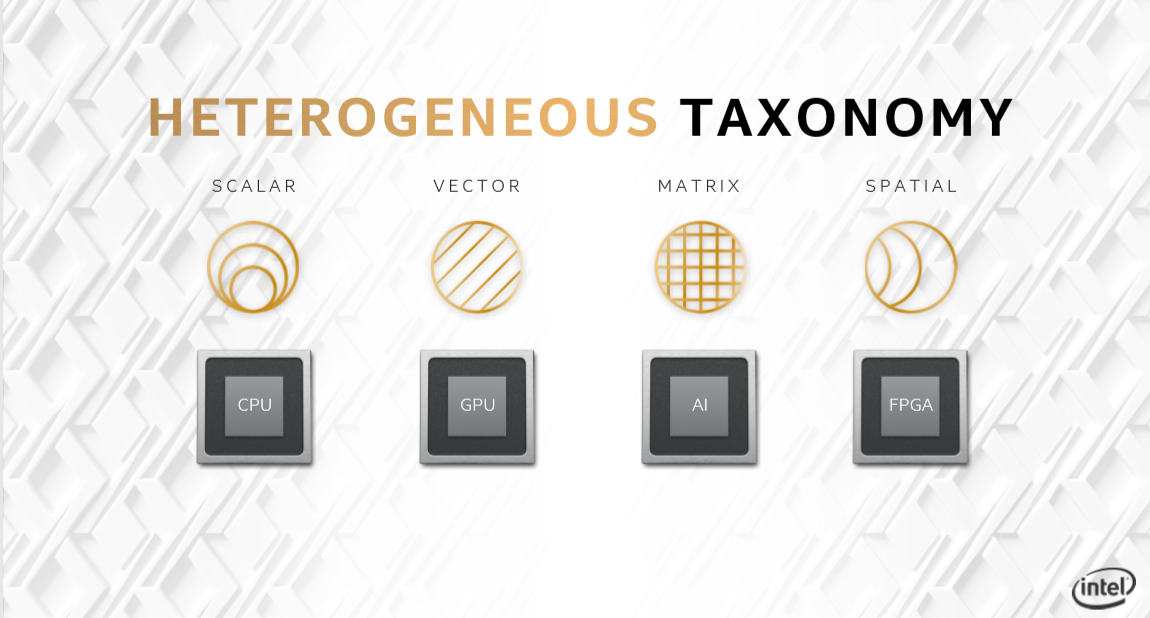Intel Realigns Data Platforms Group, Creates New ‘Executive Office’
It's not a reorganization, Intel says.
Details about the ‘realignment’ (a soft restructuring) of Intel’s Data Center Group have surfaced. Intel told CRN that it has formed an executive office to pursue a long-term strategy, and sent Tom's Hardware the following statement:
"Changes in our workforce are driven by the priorities of our business, which we continually evaluate. As we move into 2020, our business units are focusing their resources on areas where we have the greatest opportunity for growth and, as part of that, some are planning to eliminate roles associated with projects that are no longer priorities. Wherever possible, we’ve transitioned employees or teams within the company to areas of business need, and we expect this to impact less than 1% of our global workforce, subject to local requirements. We are committed to treating all impacted employees with professionalism and respect, and we continue to hire for critical skills, with more than 1300 positions open in our key locations in the US and globally."
The layoffs associated with the reorganization reportedly impact hundreds of employees, in particular in the software group.
Data Platforms Group Realignment
Intel’s Data Center Group traditionally was tasked with the development of Intel’s Xeon processors for the data center, which is further subdivided into the enterprise and government, cloud, and communications service providers segments. Navin Shenoy took over as when Diane Bryant left the company in 2017.
That was also the year when Intel announced that it would become a data center first company: the company said its Xeon processors would be first to transition to new process technologies starting with 10nm++ and 7nm, by making use of EMIB to cut the Xeon dies into smaller pieces with a higher yield. Additionally, Intel’s product portfolio for the data center has broadened significantly over the years. Intel’s products for the data center besides Xeon processors and 3D NAND include FPGAs, Optane DC persistent memory, Ethernet NICs and switches, Omni Path fabric (although it will be phased out), silicon photonics, AI accelerators and the 7nm Ponte Vecchio GP-GPU.
Most recently, intel acquired Habana in December, whose inference accelerator won the Analysts’ Choice Award for best AI accelerator this week. Also late last year, it became apparent that Raj Hazra, who led the Enterprise and Government Group, would retire.
It seems those factors contributed to the restructuring of its its data center group. Intel didn’t officially announce the reorganization, aside from a brief comment when it announced the Habana acquisition, and describing it as a ‘realignment’ to AnandTech. The company told CRN that the new Data Platforms Group would be to make the company more “future focused” and customer-centric.
Get Tom's Hardware's best news and in-depth reviews, straight to your inbox.
In terms of changes, the Data Platforms Group will still be led by Navin Shenoy. He will be responsible for all those product lines and also the Internet of Things Group. It seems that Shenoy’s responsibilities will now include pretty much everything aside from the PC and 3D NAND, with various market and product segments reporting to him.
On the market side, CRN reports that this consists of the IoT group, the Network Platforms Group, and the Cloud and Enterprise Solutions Group, which was formed due to the retirement described earlier. The Network Platforms Group in particularly is noteworthy as Intel last year announced it had formed the Network and Custom Logic Group by merging the network and FPGA groups. But with this group’s leader joining AMD in January, it seems that Intel has withdrawn those plans, and told CRN that his position will not be refilled.
The FPGA group is now part of the product segments under its old name of Programmable Solutions Group. The other product segments are the AI Platforms Group, renamed from AI Products Group, the Connectivity Group, and the Xeon and Memory Group. Habana would remain an independent business unit, as Intel had announced.
The Connectivity Group will be led by Craig Barratt, the CEO of Ethernet switches start-up Barefoot Networks, which Intel acquired last year, but will now also include that company’s various other connectivity solutions.
The Xeon and Memory Group will be led by Lisa Spelman, whose previous role was vice president and general manager of Xeon Processors and Data Center Marketing. Her promotion gives her the responsibility for Xeon and Optane memory product management and marketing.
New Executive Office
An Intel spokesperson also told CRN that the company would set up a new executive office, which would be charged with the “big picture” of Intel’s data-centric product portfolio and pursue a long-term strategy, in alignment with the goal of the new group.
The executive office will report to Navin Shenoy and will consist of a CTO, a strategy officer and a business development leader, according to CRN. Intel has not yet disclosed who would fill those roles.

Layoffs
On Tuesday, Oregon Live confirmed earlier reports by SemiAccurate that there would be layoffs associated with the restructuring. According to the site’s sources within the company, it would impact “at least several hundred” in Oregon and other sites around the world. In particular the company’s software group would be impacted. The cause for this was pinpointed by the sources to the retirement of Intel Vice President Imad Sousou in September.
As part of its fourth quarter earnings, Intel has commented that the layoffs would impact less than 1% of its workforce of over 110,000 employees.
Late last year, 450 employees were already impacted when Intel closed two sites in Germany related to its 5G modem efforts, although over 2000 employees moved from Intel to Apple.
Thoughts
With the resurgence of AMD with a competitive product lineup, there are often discussions about how this will impact both companies’ market share. But Intel CEO Bob Swan has much bigger plans for the company, aiming to compete in what he calls a $300 billion addressable market. This compares with AMD who has relatively close to bankruptcy just half a decade or so ago.

Although AMD has since paid off much of its debt and improved its financials considerably, Intel is now also competing in many segments besides selling microprocessors for PCs and the data center, as the company wants to increase its role in the ‘data economy.’ The company has indicated in that past that it sees the future as a much more heterogeneous mix of scalar (CPU), vector (GPU), matrix (AI) and spatial (FPGA) compute.
Nevertheless, the vast majority of Intel’s revenue still comes from CPUs.
